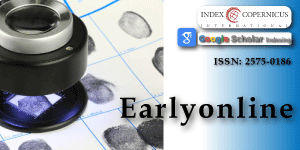Forensic Perspectives on Human Chimerism: Identification Challenges and Detection Strategies
Main Article Content
Abstract
Chimerism is a biological condition in which a single individual harbors two or more genetically distinct cell populations originating from different zygotes. This phenomenon may occur naturally due to errors during fertilization or early embryonic development, or it may arise artificially following medical interventions such as hematopoietic stem cell transplantation (HSCT) or in vitro fertilization (IVF). Chimerism is broadly categorized as natural or artificial, and its presence presents significant challenges in both clinical and forensic contexts. In transplant recipients, the coexistence of donor- and host-derived cells can generate misleading genetic test results and complicate post-transplant monitoring. In forensic investigations, individuals with mixed DNA profiles may be difficult to identify accurately, as standard genetic fingerprinting technologies can yield inconclusive or erroneous findings. These complications underscore the necessity of reliable detection methods capable of identifying and differentiating chimeric cell populations. This review consolidates current knowledge regarding the classification of chimerism and the available diagnostic techniques, emphasizing that improved understanding of this condition is essential for enhancing diagnostic precision, optimizing forensic identification, and minimizing the risk of misinterpretation that may adversely affect medical decisions and legal determinations.
Article Details
Copyright (c) 2025 Kumar H, et al.

This work is licensed under a Creative Commons Attribution 4.0 International License.
1. Madan K. Natural human chimeras: A review. Eur J Med Genet. 2020;63(9):103971. Available from: https://doi.org/10.1016/j.ejmg.2020.103971
2. Arcabascio C. Chimeras: Double the DNA–double the fun for crime scene investigators, prosecutors, and defense attorneys. Akron Law Rev. 2007;40(2):435–64. Available from: http://nsuworks.nova.edu/cgi/viewcontent.cgi?article=1037&context=law_facarticles
3. Waszak M, Cieślik K, Wielgus K, Słomski R, Szalata M, Skrzypczak-Zielińska M, et al. Microchimerism in twins. Arch Med Sci. 2013;9(6):1102–6. Available from: https://doi.org/10.5114/aoms.2013.39212
4. Tavares L, Da Costa DC, Batschauer APB, Jobim LFJ, Ewald GM, de Mello C, et al. Blood chimerism in twins. Immunohematology. 2018;34(4):151–7. Available from: https://pubmed.ncbi.nlm.nih.gov/30624949/
5. Khan F, Agarwal A, Agrawal S. Significance of chimerism in hematopoietic stem cell transplantation: New variations on an old theme. Bone Marrow Transplant. 2004;34(1):1–12. Available from: https://doi.org/10.1038/sj.bmt.1704525
6. Darby A. The case of Lydia Fairchild and her chimerism (2002). The Embryo Project Encyclopedia. 2021. Available from: https://embryo.asu.edu/pages/case-lydia-fairchild-and-her-chimerism-2002
7. Yu J, et al. Detection of chimerism in forensic samples: Challenges and case studies. Forensic Sci Int Genet. 2022;60:102717. Available from: https://doi.org/10.1016/j.fsigen.2022.102717
8. George R, Donald PM, Nagraj SK, Idiculla JJ, Ismail RH. The impact of chimerism in DNA-based forensic sex determination analysis. Malays J Med Sci. 2013;20(1):76–80. Available from: https://pubmed.ncbi.nlm.nih.gov/23785258/
9. Mahmood U, O’Donoghue K. Microchimeric fetal cells play a role in maternal wound healing after pregnancy. Chimerism. 2014;5(1):40–52. Available from: https://pmc.ncbi.nlm.nih.gov/articles/PMC4199806/
10. Klintschar M, Schwaiger P, Regauer S, Mannweiler S, Kleiber M. Persisting fetal microchimerism does not interfere with forensic Y-chromosome typing. Forensic Sci Int. 2004;139(2–3):151–4. Available from: https://doi.org/10.1016/j.forsciint.2003.10.011
11. Sandhya S, Naik R, Suryawanshi H, Gupta N. Microchimerism: A new concept. J Oral Maxillofac Pathol. 2019;23(2):311. Available from: https://doi.org/10.4103/jomfp.JOMFP_85_17
12. Johnson BN, Peters HE, Lambalk CB, Dolan CV, Willemsen G, Ligthart L, et al. Male microchimerism in females: A quantitative study of twin pedigrees to investigate mechanisms. Hum Reprod. 2021;36(9):2529–37. Available from: https://doi.org/10.1093/humrep/deab170
13. Marin S, Fernandez S, Alvarado A, Bermejo C, Martinez P, Mansilla E, et al. A case of blood chimerism and twin-to-twin transfusion syndrome in monochorionic dizygotic twins. Obstet Gynecol Rep. 2020;4(1):1–3. Available from: https://doi.org/10.15761/OGR.1000142
14. van Dijk E. Tetragametic chimerism in forensic DNA casework. Int J Legal Med. 2016;130(2):383–90.
15. Yunis EJ, Zuniga J, Romero V, Yunis EJ. Chimerism and tetragametic chimerism in humans: Implications in autoimmunity, allorecognition, and tolerance. Immunol Res. 2007;38(1–3):213–36. Available from: https://doi.org/10.1007/s12026-007-0013-3
16. George R, Sriram G, Saraswathi TR, Sivapathasundharam B. Isolation of epithelial cells from acrylic removable dentures and gender identification by amplification of the SRY gene using real-time PCR. J Forensic Dent Sci. 2010;2(1):32–6. Available from: http://dx.doi.org/10.4103/0974-2948.71055
17. Sharma S. SRY gene analysis in complex sex determination cases. J Forensic Sci. 2020;65(3):849–57.
18. Shao H. Complex sex chromosome mosaicism in chimeric individuals: Forensic implications. Forensic Sci Int Genet Suppl Ser. 2021;8:144–6.
19. Alghafri R, Al Saeedi R, Al Lawati Z, Al Balushi F. Multi-locus approach for accurate sex determination in chimeric individuals. Forensic Res Criminol Int J. 2023;11(1):45–52.
20. Sato T. Genetic profiling strategies for identifying chimerism in forensic casework. Leg Med. 2022;58:102099.
21. Drobnič K. A new primer set in the SRY gene for sex identification. Int Congr Ser. 2006;1288:268–70. Available from: https://doi.org/10.1016/j.ics.2005.08.020





